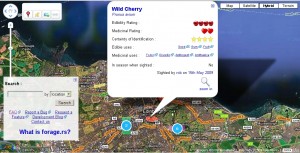 As the world discusses desertification and worries about the drought in East Africa, it’s as well to remember that it is livestock keepers that bear the brunt of these problems. A recent paper in Agriculture, Ecosystems and Environment helps to quantify the size of the challenge.
As the world discusses desertification and worries about the drought in East Africa, it’s as well to remember that it is livestock keepers that bear the brunt of these problems. A recent paper in Agriculture, Ecosystems and Environment helps to quantify the size of the challenge.
It uses environmental and livelihoods data to map the geographic distribution of different livestock-keeping strategies in East Africa. The authors — a team lead by FAO — conclude that:
…nearly 40% of all livestock in the IGAD region are kept in mixed farming areas, where they contribute to rural livelihoods in diverse ways, not least by enhancing crop production through manure and draught power and by providing additional indirect inputs to livelihoods that are seldom properly accounted for. Moreover, an estimated 50 million rural people in Eastern Africa — over a third of the rural population — live in areas where livestock predominate over crops as a source of income. Investment statistics would suggest that this fact often fails to be appreciated fully by governments, donors and policy makers.
The map itself will hopefully prove useful in guiding policy in the future, but I want to concentrate here on some of the analysis that having all these data in a GIS allowed. In particular, look at graphs of the prevalence of different livelihoods strategies plotted against human population density, and then length of growing period. A pastoral production system is where total household income from livestock (L) is 4 or more times greater than total household income from crops (C). An agro-pastoral system has a L/C ratio of 1-4. And in a mixed farming production system the income from crops exceeds that from livestock (L/C<1).[/efn_note]


It looks like areas with a human population density of 20-30 people per square kilometer and a growing season of about 150 days are the most diverse in terms of production systems. It would be interesting to know whether they are also most diverse at the species and genetic levels, for either crops or livestock. I suspect the necessary data weren’t collected in the livelihoods surveys that formed the basis of this study. Will no enterprising student go in and test the hypothesis?




